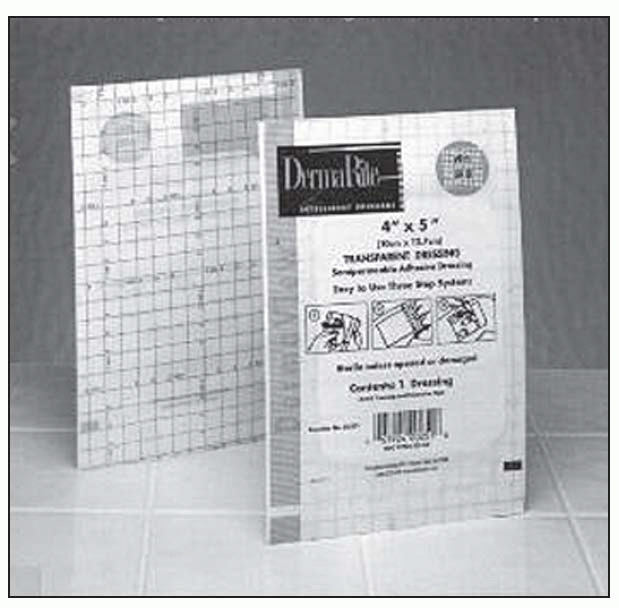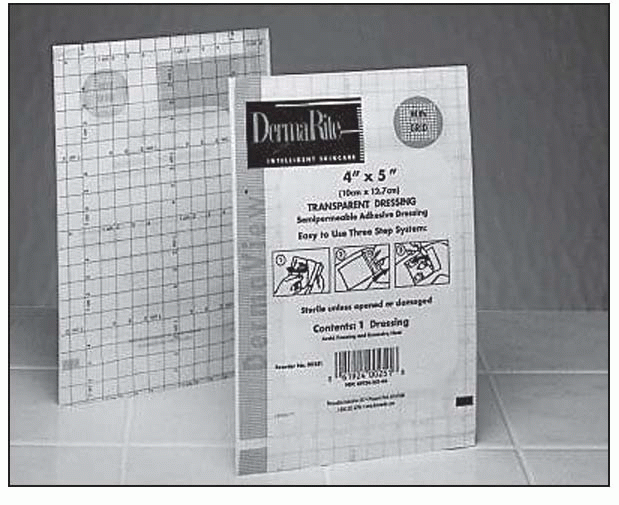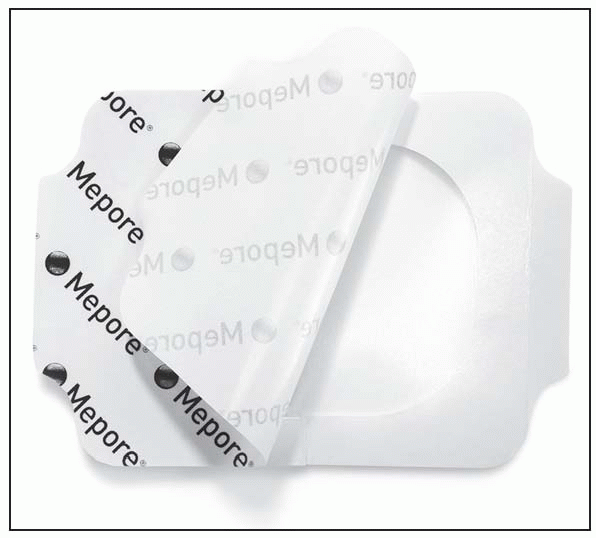Transparent Films
Action
Transparent films are adhesive, semipermeable, polyurethane membrane dressings that vary in thickness and size. They’re waterproof and impermeable to bacteria and contaminants, yet they permit water vapor to cross the barrier. These dressings maintain a moist healing environment, promoting formation of granulation tissue and autolysis of necrotic tissue.
Indications
Transparent films may be used as a primary or secondary dressing to prevent and manage stage 1 pressure ulcers, partial-thickness wounds with little or no exudate, and wounds with necrotic tissue or slough.
Advantages
Retain moisture
Are impermeable to bacteria and other contaminants
Facilitate autolytic debridement
Allow wound observation
Do not require a secondary dressing
Disadvantages
May not be recommended for infected wounds
Not recommended for wounds with moderate to heavy drainage because they don’t absorb
Not recommended for use on fragile skin
Require a border of intact skin for adhesive edge of dressing
May be difficult to apply and handle
May dislodge in high-friction areas
HCPCS code overview
The HCPCS codes normally assigned to transparent film dressings are:
A6257—pad size <16 in2
A6258—pad size >16 in2 but ≤ 48 in2
A6259—pad size >48 in2
DermaView
DermaRite Industries, LLC
Action
DermaView is a semiocclusive bacterial and viral barrier that protects skin from urine and fecal breakdown. This semipermeable dressing maintains a moist healing environment.
Indications
May be used as a primary or secondary dressing, to secure other dressings, or for necrotic wounds that need autolytic debridement.
Contraindications
Contraindicated for infected areas
Contraindicated for patients with deep systemic infections
Contraindicated for full-thickness wounds involving muscle, tendon, or bone
Application
Clean the wound area.
Consulting the dressing instructions, peel off area surface labeled no. 1.
Position the dressing over the wound, and press it down gently around the wound’s perimeter.
Pull out tab no. 2 and discard it. Peel back tab no. 3.
Smooth the dressing out firmly from the center toward the edges.
Removal
Lift and slowly stretch one corner of the dressing in the direction of the hair growth.
Continue stretching or pulling around the perimeter of the dressing, and then remove remaining film.
DermaView II
DermaRite Industries, LLC
Action
DermaView II is a transparent, semipermeable dressing with an ultrathin conformable film, coated with hypoallergenic adhesive and laminated between two protective silicon release papers. A properly applied dressing is impermeable to bacteria and liquids but offers excellent moisture vapor permeability properties.
Indications
May be used as a primary or secondary dressing, to secure other dressings, or for necrotic wounds that need autolytic debridement.
Contraindications
Contraindicated as a primary dressing on heavily draining wounds
Not intended to replace wound closures
Contraindicated for infected wounds
Application
Clean the wound area with DermaKlenz wound cleaner or Safe Wash saline.
Consulting the dressing instructions, remove the primary adhesive liner from the film adhesive.
Place the dressing over the wound site. Use the notch in the frame to place over the catheter hub when using for I.V.
Smooth the dressing in place using firm, but gentle pressure.
Carefully remove the paper frame from the perimeter of the film dressing. Secure any loose edges, if necessary.
Removal
Carefully loosen the perimeter of the film dressing.
Holding down one edge of the film, gently pull the opposite edge to break the adhesive bond.
Mepore Film Transparent Film Dressing
Mölnlycke Health Care
Action
Mepore Film is a breathable, transparent self-adhesive film dressing that conforms easily to body contours, helps protect the wound surface, and provides a barrier to leakage and bacterial contamination. Mepore Film helps maintain a moist wound environment, and the adhesive is gentle to the skin and wound site.
Indications
Designed for a wide range of clean wounds in the granulation phase, such as superficial burns, I.V. sites, abrasions, lacerations, superficial pressure ulcers, closed surgical wounds, and donor sites with low exudate levels, as well as for prevention of skin breakdown.
Stay updated, free articles. Join our Telegram channel

Full access? Get Clinical Tree





